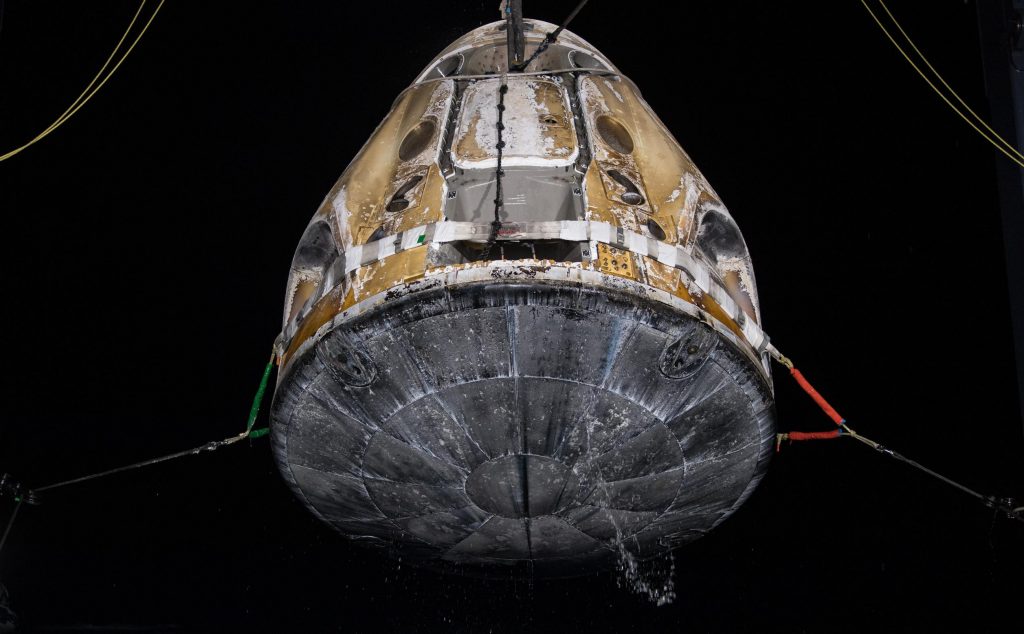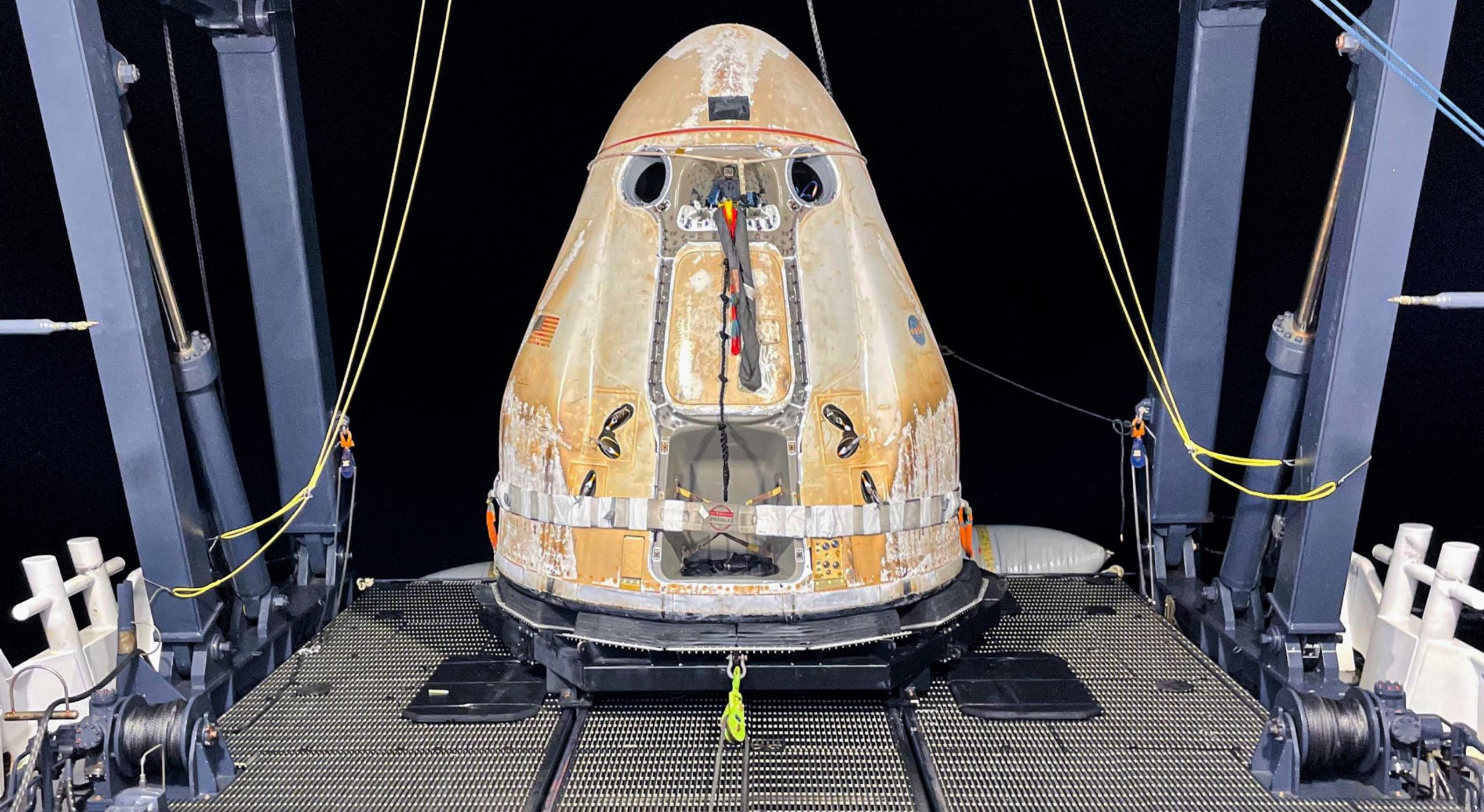A SpaceX Cargo Dragon 2 spacecraft has safely returned to Earth after delivering several tons of NASA supplies to the International Space Station (ISS).
A little over six weeks after Falcon 9 launched SpaceX’s 26th Commercial Resupply Services 2 (CRS2) mission for NASA, Dragon departed the ISS on January 9th. Efficiently lowering its orbit with several small Draco thrusters took about 36 hours, and reusable Dragon 2 capsule C211 eventually slowed to the point that it began impacting Earth’s atmosphere. Using its ablative heat shield like a brake pad, Dragon slowed from a velocity of 7.5 kilometers per second (16,800 mph) to about 155 meters per second (~350 mph) before beginning parachute deployment.
At 5:19 am on January 11th, the Dragon capsule gently splashed down off the coast of Tampa, Florida, and was quickly secured by a SpaceX recovery ship. Once onboard, the capsule was opened up, and cargo fresh from orbit was loaded onto a helicopter as quickly as possible. That system – primarily created to rapidly transport astronauts back to NASA medical facilities – also means that scientists can get access to their recovered ISS experiments just a handful of hours after Cargo Dragon splashes down.
The update that's rolling out to the fleet makes full use of the front and rear steering travel to minimize turning circle. In this case a reduction of 1.6 feet just over the air
— Wes (@wmorrill3) April 16, 2024
Some of the scientific investigations returned by Dragon include:
Deep space radiation protection: A vest designed to protect astronauts from high doses of radiation caused by unpredictable solar particle events is returning to Earth after months of testing. Crew members wore the Astrorad vest while performing daily tasks and provided feedback about how easy it is to put on, how it fits and feels, and the range of motion possible while wearing it. The vest’s developers plan to use that feedback to improve design of the garment, which could provide radiation protection for astronauts on Artemis missions to the Moon.
Air, water, plants: XROOTS used hydroponic (water-based) and aeroponic (air-based) techniques to grow plants without soil or other growth media. Researchers collected video and still images to evaluate growth chambers through the plant life cycle from seed germination through maturity. The plant chambers are returning to Earth for additional analysis. Similar techniques could be used to produce crops for future space missions and to enhance cultivation and food security for the benefit of people on Earth.
Bioprospecting in space: Bioprospecting is the process of identifying plants and animals that may contain substances with potential for use as drugs, biochemicals, and more. Previous studies found that space can cause genetic and physiological changes that could result in microbes yielding such materials. Rhodium Microgravity Bioprospecting-1 studied a way to search for these microbes. The science chambers and temperature logger from the investigation are returning to Earth for further examination.”
Blogs.NASA.gov – January 11th, 2023
SpaceX’s second-generation Cargo Dragon spacecraft is nearly identical to Crew Dragon. Both are made up of two main parts: a reusable capsule and an expendable ‘trunk.’ The Dragon 2 trunk is a tube-like carbon fiber composite structure covered by a skin of curved solar arrays and radiators. It can also hold several tons of unpressurized cargo.
Dragon’s capsule holds a pressure vessel, environmental control systems (ECLSS), all 16 Draco maneuvering thrusters, propellant tanks, docking systems, and an ablative heat shield. In the case of Crew Dragon, the capsule is also outfitted with windows, crew seats, hand control, and SuperDraco launch abort thrusters. Both Cargo and Crew Dragon capsules represent the vast majority of the total spacecraft cost and can be recovered, refurbished, and reflown in as little as four months.
NASA is SpaceX’s only Cargo Dragon customer. January 11th’s recovery marked the completion of CRS2 Spx-26, SpaceX’s 25th successful ISS resupply mission since 2012. After adding more contracts last year, NASA has arrangements for at least nine more Dragon 2 resupply missions stretching into 2026 or 2027. NASA also signed contracts for eight Crew Dragon astronaut launches in 2022 and has nine missions on contract between now and the late 2020s or 2030.
While Falcon 9 infamously failed during the June 2015 launch of CRS-7, every Dragon that has ever reached orbit has been recovered in one piece. Spx-26 was Dragon’s 38th mission overall and 35th consecutively successful recovery from orbit.












